At a solemn gathering of WNY clergy last Friday in commemoration of the one-year anniversary of the mass shooting at Tops Market on Jefferson Avenue, Rev. Rochelle Robinson began by reading the list of the names of the victims. Not their last names. Just their first: Aaron, Celeste, Roberta, Andre, Katherine, Margus, Heyward, Geraldine, Ruth and Pearl. The effect was to humanize these individuals, reminding us of how they were called by their friends and family when they were alive in this world.
Numbers, no matter how big or how small, can capture the immensity of a tragedy, but not the heart of it. Take the Holocaust for example, the number six million is overwhelming, but it fails to capture the individual stories. Every person murdered by the Nazis had an individual life, full of love and loss, human connection, and loneliness. Projects like the Paper Clips Project, where middle schoolers in the small Tennessee town of Whitwell collected millions of paper clips to illustrate just how large a number six million really is, help us focus on what the true number means, but still alienate us from the actual individuals who lost their lives. The Hall of Names, one of the most important rooms at Yad Vashem, the Holocaust Memorial Museum in Jerusalem, has compiled names of victims in large binders and still are millions shy of the true extent of the horror.
This week, the Book of Bamidbar, or Numbers, begins with an elaborate census that records exactly how many men between the ages of twenty and fifty were in each of the twelve tribes. Adding them up and the final tally comes to 603,550, a number ironically similar to the size of Israel’s army today which is 634,500 (this includes the reserve as well as the active-duty soldiers). What is lost among this large accounting of our Biblical ancestors, in addition, of course, to women, children, and seniors, are the actual names of the individuals, outside of the leadership of the tribes. A lot could have been gleaned from that information. We could have seen the ethnic makeup of this mixed multitude, a hierarchy of the common names, a better sense of how Israelite families were connected to one another, and a real sense of the actual story. Now, if such a list existed, it would have been longer than the Torah itself, but for Historians and Archaeologists, maybe almost as impactful. The lesson of both our May 14 tragedy and this week’s Torah portion is to try, whenever possible, to “name our numbers,” doing so is the best way to honor their memories.
Shabbat Shalom,
Rabbi Alex
